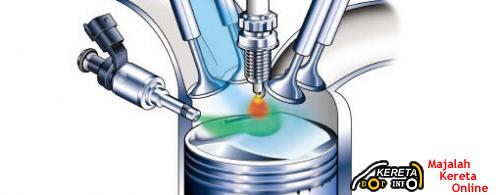
EcoBoost is Ford Motor Company’s new high-volume, affordable engine technology slated for a range of global vehicles – from small cars to large trucks.
EcoBoost uses gasoline turbocharged direct-injection technology for up to 20 percent better fuel economy, 15 percent fewer CO2 emissions and superior driving performance versus larger displacement engines.
The new technology will be available in half a million Ford, Lincoln and Mercury vehicles annually in North America during the next five years – beginning with the new Lincoln MKS sedan in 2009.
More With Less
EcoBoost’s combination of direct injection and turbocharging mitigates the traditional disadvantages of downsizing and boosting 4- and 6-cylinder engines, giving customers both superior performance as well as fuel economy.
With direct injection, fuel is injected into each cylinder of an engine in small, precise amounts. Compared to conventional port injection, direct injection produces a cooler, denser charge, delivering higher fuel economy and performance.
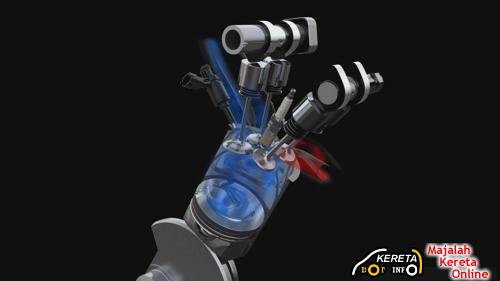
How Ford EcoBoost technology works
When combined with modern-day turbocharging – which uses waste energy from the exhaust gas to drive the turbine – direct injection provides the best of both worlds: the responsiveness of a larger-displacement engine with fewer trips to the gas pump.
Ford’s 3.5-liter EcoBoost V-6, for example, can deliver upwards of 340-plus lb.-ft. of torque across a wide engine range – 2,000 to 5,000 rpm versus 270 to 310 lb.-ft of torque for a conventional naturally aspirated 4.6-liter V-8 over the same speed range. At the same time, this V-6 gives customers an approximate 2 mpg improvement and emits up to 15 percent fewer CO2 emissions to the environment.
Direct injection coupled with turbocharging allows for the downsizing of engines that deliver improved torque and performance. A small 4-cylinder EcoBoost engine has the capability of producing more torque than a larger 4-cylinder engine – nearly an entire liter larger in displacement – with better fuel efficiency.
The real-world fuel economy benefit is consistent no matter the drive cycle, meaning the engine is efficient in the city as well as on the highway – unlike hybrids, which are most efficient in stop-and-go traffic. In addition, customers who tow and haul – and have long turned to more expensive diesel powertrains for their superior towing capabilities – can find the engine performance they need from an EcoBoost powertrain.
EcoBoost – combined with multi-speed transmissions, advanced electric power steering, weight reductions and aerodynamic improvements – is part of Ford Motor Company’s strategy to deliver sustainable, quality vehicles that customers want and value. Additional hybrid offerings and diesel engines are planned for light-duty vehicles.
Longer term, Ford plans to remain aggressive in the development of plug-in hybrids and hydrogen fuel cell-powered vehicles.
“We know that what will make the biggest difference is applying the right technology on volume vehicles that customers really want and value and can afford,” said Kuzak. “EcoBoost puts an affordable technology within reach for millions of customers, and Ford’s systems approach adds up to a big idea that differentiates Ford’s sustainability strategy in the market.”
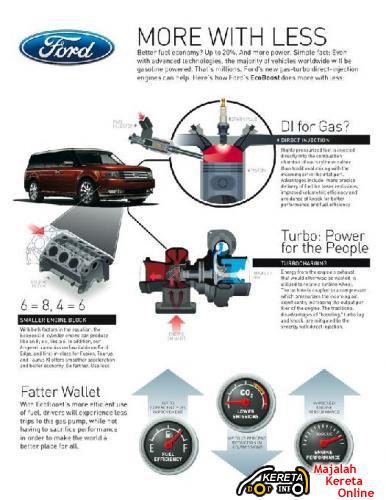
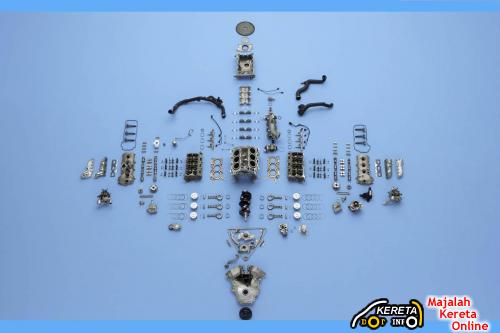
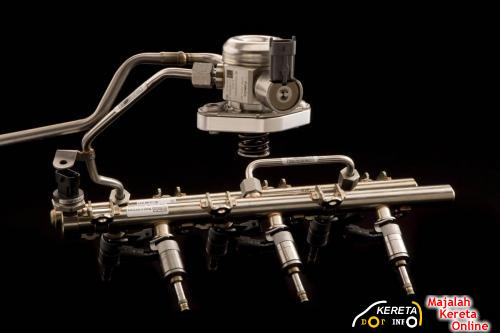


Jom komen!